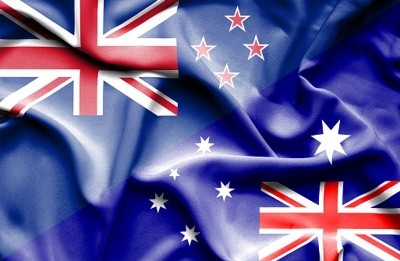New collagen source: New Zealand seafood firm launches ingredient from swim bladder of Ling fish

Ling is a deep-sea fish that can be found in the waters around the South Island of New Zealand. Its swim bladder is considered a by-product and is usually discarded or converted into fishmeal and fertilizer.
The company that has started this endeavour is New Zealand Coastal Seafoods (NZCS) listed on the Australian Securities Exchange.
A processor, distributor, and exporter of premium seafood and nutraceutical ingredients, the firm sees Ling maw as a disruptor to the already saturated collagen supplement market.
Prior to collagen, the company is already producing and selling astaxanthin oil, mussel powder and oil for use in nutraceuticals.
Its food business, on the other hand, includes ready to eat range such as dried Ling maw, cooked Ling maw, and ready-to-eat abalone. The company also sells Ling Maw wholesale via distributors, restaurants, seafood traders, supermarkets, and other retailers in the Oceania and Asia.
Speaking to NutraIngredients-Asia, Peter Fletcher, chief of sales at NZCS, said that the collagen from Ling maw could be used for various health aspects, from supporting beauty-from-within, to providing nourishment to pregnant women and helping post-exercise recovery.
Specifically, the collagen that the company has commercialised is Ling maw collagen peptide powder.
“It is a type I collagen. It would definitely go into beauty or cosmetic products, which is the area that we would focus on first.”
Type I collagen is the most prevalent type of collagen in the body, especially in the hair, skin, and nails.
“It could also go into pregnancy and digestion support, as well as sports nutrition,” Fletcher said.
Ling maw is consumed as a soup or stew in Chinese cuisine and the company has engaged clinical research organisation RDC Clinical to validate its benefits on gut and digestive health based on Traditional Chinese Medicine concepts.
“For pregnancy support, there's a lot of claims around ling maw, that it is good for nourishment. When a pregnant woman's nourishment is going to the child and therefore hers is lacking, we can support her with the ling maw,” he said.
It is recommended to formulate the Ling maw collagen into the form of capsules or powder sachet.
“Based on our testing, Ling maw contains high amounts of protein, between 93 and 96 per cent.
“And because we only need a small dosage of Ling maw, the serving size at the moment is between 0.5 grams and a gram.
“Since a typical serving size of a powder sachet is probably no less than four grams, we can also add vitamin C – which helps boost collagen production, to the Ling maw collagen powder,” he added.
Market competition
Fletcher believes that the Ling maw collagen would disrupt the already saturated collagen supplement market.
“The market is saturated and flat at the moment and all of these companies are looking for something new, something special, and products that have the edge and ours have multiple advantageous,” he said.
The firm’s Ling maw is also sustainably harvested under certification from the Marine Stewardship Council.
“Any batch of dried ling maw in our facility, I have a record all the way back to where it was caught we can push it further into the powder if we want to, it will be quite easy,” he added.
The plan is to focus the collagen ingredient in Australia and New Zealand before scaling up the production for expansion into the other markets.
This year, the firm signed MoU with two distributors, namely Ingredients Plus and Beyond Capital, to help introduce its Ling maw collagen to other markets.
Clinical trials
Another important aspect that supplement brands are looking out for, is whether the ingredients used are clinically backed.
“There's a lot of claims on different types of collagen on the market, very few are backup by science. Our clients that we have talked to, they want to be able to say that they are backed up by science.
“Hence the clinical trials that we will be conducting very soon to support the marketing materials.”
In this case, the company has two ongoing studies to support the science behind Ling maw collagen.
The first trial is to find out the body’s absorption rate of Ling maw powder and the dosage amount required for a therapeutic effect – which the company believes could be achieved just using a small amount.
“Most products in the market are from the fish skin and our products are from Ling maw, which itself is 95 per cent collagen, while in fish skin, it’s much less than that.
“Our team has also developed a process – enzyme hydrolysis that breaks down the collagen into small pieces and so we believe that the absorption rate is going to be very high.”


















